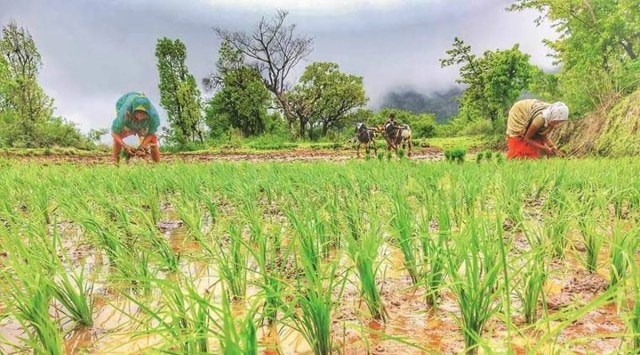Stay updated with the latest - Click here to follow us on Instagram
Crop Cutting Experiments: Results of 70% experiments show increase of 54 kg in paddy yield per hectare this year in Punjab
Around 70% of crop cutting experiments (CCEs) witnessed an average of 54 kg increase in the paddy yield per hectare in Punjab so far as compared to last year’s average yield,
 The Punjab Agriculture Department has received the results of 70% CCEs from all the districts of the state so far. (Representational)
The Punjab Agriculture Department has received the results of 70% CCEs from all the districts of the state so far. (Representational)Despite the inclement weather just before the paddy harvesting which started on October 1 due to delayed monsoon in the state, around 70% of crop cutting experiments (CCEs) witnessed an average of 54 kg increase in the paddy yield per hectare in the state so far as compared to last year’s average yield, which was based on 87% of the total proposed CCEs across the state then. More than 50% of districts of the state have recorded more average yield than last year.
The Punjab Agriculture Department has received the results of 70% CCEs from all the districts of the state so far. This year, a total of 2,084 CCEs were conducted in 23 districts out of which the results of 1,474 CCEs have already been received till November 11 while the reports of the remaining may come by next week. According to the results of 70% CCEs conducted in all the districts across the state, Punjab has recorded 6,532 kg (6.532 tonnes) paddy production per hectare this time against the average 6,478 kg (6.478 tonnes) per hectare last year which was based on the results of 87% CCEs. Meanwhile, Punjab has already completed 96% of harvesting to date.
This is one of the highest yields per hectare. According to PAU, in 2020-21 and 2017-18, the paddy yield was 6,631 kg (6.631 tonnes) and 6,932 kg (6.932 tonnes), respectively. Punjab’s paddy yield from 1960-61 to 1970-71 was between 1,553 and 2,774 kg per hectare and then the yield started increasing from 1980-81 when it was recorded at 4,099 kg per hectare. From the 1990s onwards, it had increased to 5,265 kg and then remained between 5,700 and 6,100 kg per hectare in the past three decades, barring in the recent years when the yield started increasing.
Over 50% of districts of the state which have shown an increase in the yield received 70% results, including Ferozepur, topped the chart with the highest average yield with 7,904 kg (7.904 tonnes) per hectare from the results of 75% CCEs against 6,576 kg last year, followed by Barnala, Sangrur and Moga. In Barnala, 7,843 kg per hectare average yield was recorded from the results of 37% CCEs against 7,081 kg last year. In Sangrur, 7,72 4 kgs (7.724 tonnes) per hectare from 66% results of CCEs against 7,540 (7.540 tonnes) kgs last year. Moga’s has also recorded 7,720 kgs per hectare from 30% CCEs against 7,073 kg last year.
Muktsar Sahib got 7,215 kg from 25% experiments against 6,236 kg last year and Bathinda received 7,210 kg (7.210 tonnes) average yield per hectare from 17% CCEs against 6,855 kg (6.855 tonnes) last year, Mansa got 7,118 kg from 91% experiments against 6,820 kg last year, in Faridkot the results of around 90% CCEs were received according to which average yield was recorded at 6,810 kg per hectares against 6,491 kg last year. In Jalandhar, 50% of experiments report has been received so far and the district recorded a 6,521 kg yield against 6,384 kg last year.
Kapurthala received 6,371 kg from 97% CCEs against 6,297 kg last year, from 88% CCEs Tarn Taran 6,033 kg yield was received against 5,937 kg last year, Amritsar recorded 5,764 kg against 5,375 kgs last year, and based on 92% CCEs, Fazilka witnessed 5,905 kg against 4,690 kg last year.
Though Ludhiana has also recorded 7,084 kgs yield per hectare, its yield has shown a decrease from last year when it was 7,192 kg.
Districts like Pathankot, Patiala, Ropar, Nawanshahr, Mohali, Gurdaspur, Hoshiarpur, and Fatehgarh Sahib recorded a decrease in average yield so far.
According to the department, last year total reports of 87% of experiments could be received by the department based on which the average of the yield of the state was calculated.







